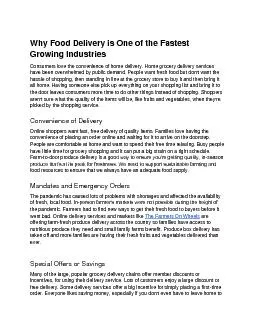PPT-Delivery System Transformation in the Era of
Author : tawny-fly | Published Date : 2018-11-04
Reform Nadia Siddiqui MPH Director of Health Equity Programs Texas Health Institute THI Team Dennis Andrulis PhD MPH Lauren Jahnke MPAff Anna Stelter MPH MSSW
Presentation Embed Code
Download Presentation
Download Presentation The PPT/PDF document "Delivery System Transformation in the Er..." is the property of its rightful owner. Permission is granted to download and print the materials on this website for personal, non-commercial use only, and to display it on your personal computer provided you do not modify the materials and that you retain all copyright notices contained in the materials. By downloading content from our website, you accept the terms of this agreement.
Delivery System Transformation in the Era of: Transcript
Download Rules Of Document
"Delivery System Transformation in the Era of"The content belongs to its owner. You may download and print it for personal use, without modification, and keep all copyright notices. By downloading, you agree to these terms.
Related Documents














